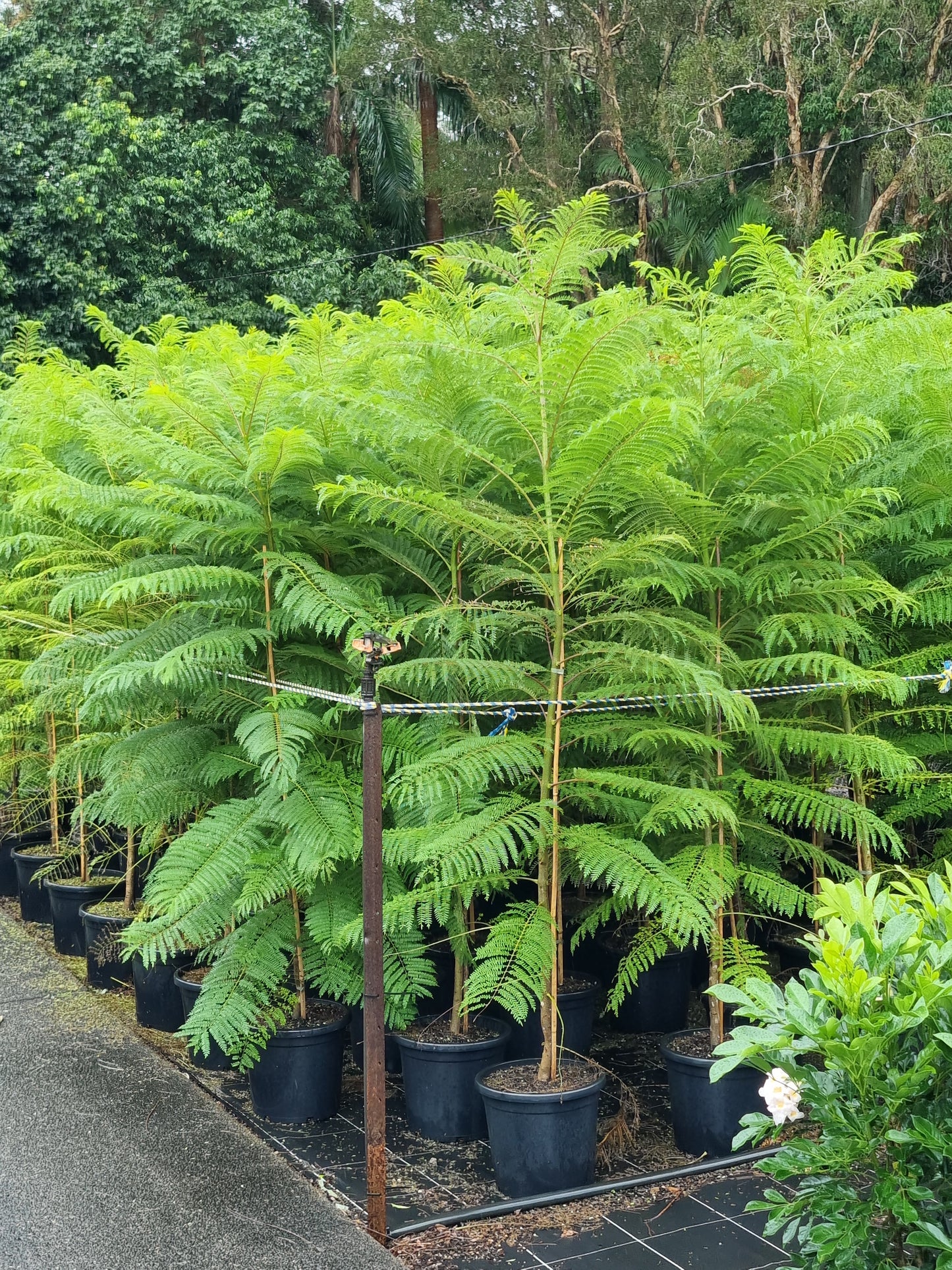Delivertree
Jacaranda Tree SALE - Jacaranda mimisifolia
Jacaranda Tree SALE - Jacaranda mimisifolia
Couldn't load pickup availability
Summary:
Jacaranda mimosifolia is an iconic deciduous to semi-evergreen tree native to South America and widely planted across Australia for its breathtaking purple-blue blooms. In late spring to early summer, its branches are adorned with trumpet-shaped flowers, often carpeting the ground below in vibrant colour. With a graceful, spreading canopy and soft, fern-like foliage, Jacaranda makes a stunning feature tree for larger gardens and streetscapes.
Quick Overview:
- Common Name: Jacaranda
- Botanical Name: Jacaranda mimosifolia
- Origin: Native to South America; widely planted in Australia
- Height and Width: 8–12m high x 6–10m wide in cultivation
- Foliage: Soft, fern-like bipinnate foliage
- Flowers: Masses of purple-blue trumpet-shaped flowers from late spring to early summer
- Fruiting: Flat woody seed pods develop after flowering
- Wildlife Attraction: Attracts bees and other pollinators
- Position: Full sun; best performance in open, sunny positions
- Soil: Well-drained soil; tolerates loam, sand, or clay with good drainage
- Tolerance: Light frost and moderate drought once established
- Maintenance: Low maintenance; seasonal pruning may be required
Detailed Description:
Jacaranda mimosifolia is best known for its showy and abundant flowering display. The tree produces striking trumpet-shaped flowers in rich shades of purple and blue, often blooming en masse in late spring through early summer. Its fine, fern-like foliage adds softness and movement, creating dappled shade perfect for garden seating or open lawn areas.
Although native to South America, Jacaranda has naturalised in many parts of Australia, especially in warmer temperate and subtropical regions. It grows best in full sun and prefers well-drained soil, though it will tolerate a range of conditions once established. While semi-deciduous, it can shed its leaves during colder months, making way for the full bloom to dominate.
Jacarandas are commonly planted as feature trees in residential gardens, street plantings, and public parks. Their wide, spreading canopy and flowering period make them one of the most loved ornamental trees in Australia. They are non-invasive and generally pose little maintenance once mature.
Growth and Maintenance:
- Watering: Water regularly during establishment; drought-tolerant when mature
- Fertilising: Apply an all-purpose fertiliser in spring to promote flowering and foliage
- Mulching: Maintain mulch around the root zone to conserve moisture and reduce weeds
Pruning:
- Tree Form: Maintain a central leader during the juvenile stage for strong vertical structure
- Symmetry: Lightly prune for shape after flowering; remove crossing or crowded branches
- Suckers: Remove any water shoots or suckers from the base of the trunk if they appear
Common Uses:
- Feature tree in large gardens or parks
- Street tree or avenue planting
- Seasonal colour impact in public and private landscapes
Planting Benefits:
- Seasonal Beauty: Spectacular floral display of purple-blue blooms in spring and summer
- Shade Provider: Wide-spreading canopy creates cool, filtered shade
- Low Maintenance: Hardy and resilient with minimal pruning requirements
- Wildlife Friendly: Flowers attract bees and beneficial pollinators
Share


